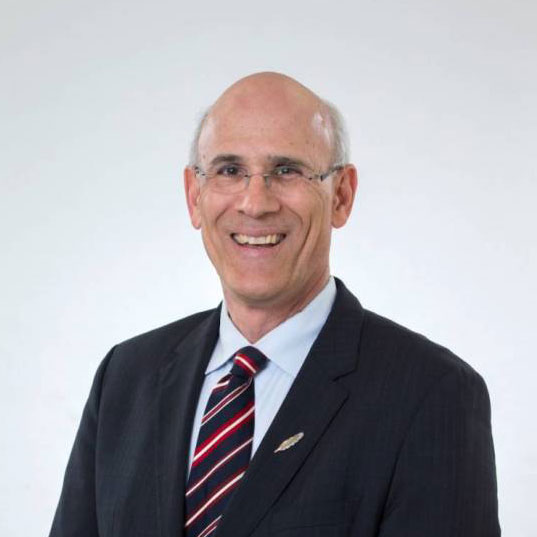A Carleton University study found the federal government to have spent at least $22 billion on outsourcing in 2021-22. The sticker shock has been the impetus for some hard academic looks into where, how and, most importantly, why that money was spent.
These were among the issues addressed during a webinar we recently hosted featuring Dr. Amanda Clarke from Carleton University, one of the 100 most influential academics in government, and Michael Wernick from theJarislowsky Chair in Public Sector Management at University of Ottawa and former Clerk of the Privy Council.


The first point raised was among the most important
“I think the first thing to keep in mind is that no one should be arguing that the government needs to go it alone or that there’s something inherently wrong with turning to outside providers or leaning on management consultants for advisory services.”
Dr. Clarke said this right off the top, and Mr. Wernick echoed it.
“On the one hand, you get a simplistic view that if we handed things over to the private sector or did it the way the private sector did, the public sector would be better for it. On the other side, you get reflexive arguments that contracting is always a problem and that everything would always be done better if it was done by full-time unionized public servants. Neither position moves the public sector forward.”
Stressing the importance of the middle ground is important in the wake of the Carleton study because the sticker shock angered a lot of people, in part because of how the story was framed by Canadian news outlets. The National Post reported “no less than $18 billion has been spent on work that could have been done by public servants between 2011 and 2021.” The Globe and Mail led their story with “outsourcing costs 74-per-cent higher than when the Liberals promised in 2015 to cut back on the use of external consultants.”
Snippets like these seem like they’re meant to quash the public appetite for outsourcing. But the answer isn’t to eliminate outsourcing. It’s to outsource better.
For the rest of the discussion, Dr. Clarke, Mr. Wernick and moderator Lori Turnbull (Deputy Editor of Canadian Government Executive Magazine) looked at how the federal government got to the point of spending so much on outsources services, the negative implications of that spend, what can be done do reduce both and, as Dr. Clarke noted, “how to do it in a way that’s accountable, that has value for money, that enriches governance and that leaves the public service and those reliant on its services in a better position.
“There’s quite a lot of room for improvement.”
Dr. Clarke mentioned this as well and broke her assertion down into a few buckets.
First was the value-for-money perspective: is government actually getting what they’re paying for from the consultants they bring in? Are they getting the highest forms of expertise, trained by elite schools of management? Could the work being done by outside consultants for a premium price be done as well or better in-house?
Second was appearances of impropriety, and Dr. Clarke broke that down into two sub-buckets. On the one hand, the strict rules of transparency, disclosure, bilingualism and ethics baked into government process for all kinds of reasons aren’t enforced equally across contracts. In some instances, it’s hard to know where money is being spent and if it’s being spent appropriately. Rightly or wrongly, these inconsistencies and the possible lack of visibility they provide raise eyebrows. A similar but different reason for scepticism is the prevalence of senior government leaders making career moves into the private sector at firms they brought in as consultants.
The third was the hollowing-out effects of outsourcing. Again, Dr. Clarke broke this down into buckets: institutional knowledge, morale and innovation — all of which negatively affect how the public service works and how well it works.
The lack of in-house institutional knowledge is key because it makes government a less informed buyer of services, and more likely to run into the problems outlined above. Also, not having in-house expertise weakens the collaborative potential between government and all its consultants because both sides can’t add equal value.
On the morale side, Dr. Clarke described the disrespect felt by public servants when exciting projects they would excel at leading or working on are outsourced. The slight leads to malaise, which comes through in the effort put forth and the lack of innovative thinking.
As for the innovation/creativity gap, Dr. Clarke cited this as the place to start the improvement process.
“Contracting is a short-term solution to a lack of in-house capacity,” she said. “It’s distracting from the more fundamental need: creating the conditions to ensure a resilient and highly capable federal public service.”
Mr. Wernick agreed and added that “a commitment to reduce the spending on management consultants without a commitment to increase training and leadership development will leave us nowhere.”
The investment has to start with people
Regardless of how much is spent on external consultive resources, both panelists emphasized the need for government to rethink how top talent is compensated and empowered.
On the renumeration side, Dr. Clarke pointed to other governments, the United States, the United Kingdom in particular, that have done a far better job of recruiting talent “by pushing salaries to a point that they’re not completely absurdly out of touch with what the private sector offers.”
This is a trend the Canadian federal government has not followed for many reasons, but Mr. Wernick pointed to the basic nature of the Canadian public sector.
“The federal government hasn’t historically been keen to undertake significant reform. But they have to be prepared to take political risks and say, ‘we’re going to professionalize and raise the game.’”
More than money, though, the investment has to be in upskilling the people they have. Mr. Wernick posited that those energies be directed towards the 14,000 middle managers in the public service.
“Middle management makes all the difference in culture and outcome and performance management and so on. A bigger investment in the middle management cadre would be enormous.”
Dr. Clarke agreed and doubled down by saying that “middle management is where good ideas die or thrive.”
Both panelists agreed that the way to do this is to prioritize empowerment by stripping away the procedural heaviness that tends to keep innovation and creativity from flourishing in the public sphere.
“We have to do a real cultural shakeup of the executive class in the federal government who were raised in a culture calibrated to focus on risk management and risk aversion as the metric of success,” said Ms. Clarke. “I think we’re still largely putting those people in an environment that is far too bogged down in excessive process and oversight, and it leads to managers not pushing the status quo. Instead, they’re more concerned about mitigating the possibility of winding up on the front page for the wrong reasons.”
Mr. Wernick added to this point with a future-focused perspective.
“The federal government workforce has an eight percent yearly churn rate. So, half of the community turn over every five years. Young replacements coming in will obviously need to be trained, but they’ll be coming in with the latest knowledge. The intermediate and senior managers who remain are the ones who get neglected because there’s a major under-investment in their skills.” Not helping them build their knowledge sets or management competencies, not encouraging an attitude of innovation, and not creating an environment where innovation can thrive are major lost opportunities and could be detrimental in the future when these managers are tasked with making major decisions.
The pandemic gave the public service a path forward
The two years of WFH broke the default position of centralizing the federal public service efforts in Ottawa. It created a much larger pool of in-house and consultive talent to choose from across the country. This is obviously a boon for improving output, and it puts the federal government in parts of the country outside the national capital region.
The 2020–2022 timeframe also forced the public service in general to rethink their rules of engagement, which Mr. Wernick noted was a major detriment to the way internal and external experts operate in the Canadian public sphere.
“Our default response to problems is to add rules and process, both of which are difficult to hack away once they’re established,” said Mr. Wernick. The pandemic forced the public service away from that and, in the process, opened up new worlds of possibility.
Now the public service can move in that direction, using the pandemic as a jumping-off point to question more about how the public service works, how it works with external consultants, and how the two can work together affordably, collaboratively and effectively for the short- and long-term health of the public service.
The consensus between the two panelists and the moderator was that outsourcing is valuable, it can work, and it has to be done and it can be done well if the in-house resources are trained to collaborate with consultants instead rather than simply being told to use them.
Shifting to this mindset will help the public benefit from both sides of the equation.

